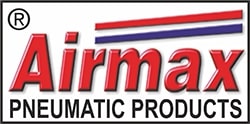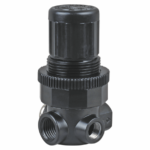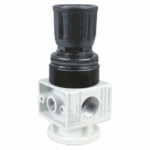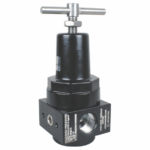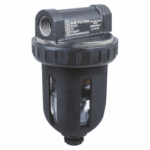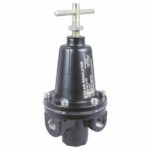How Moisture Separators Helped Reduce Downtime in a Large Manufacturing Plant
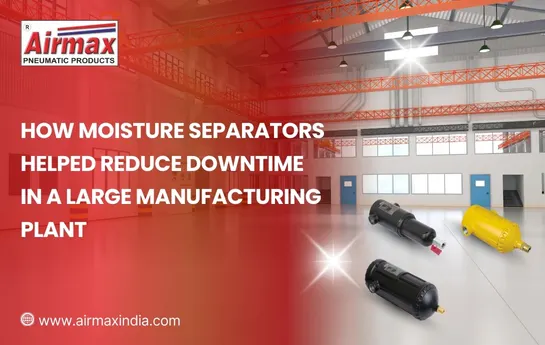
In large manufacturing plants, even a few minutes of downtime may cause significant production loss, high cost, and delay in delivery. One of the still important factors hidden behind the unplanned stoppage is the poor compressed air quality. Excess moisture in compressed air can damage sensitive devices, reduce efficiency, and increase maintenance needs.
To overcome this challenge, many industries are turning to moisture separators as a reliable solution. These devices ensure dry, clean compressed air, help plants to achieve smooth operations, and reduce downtime.
The Hidden Cost of Downtime in Manufacturing:
In an industrial setup, the downtime refers to the period when machines or production lines are forced to stop due to technical issues, maintenance, or system disabilities. Although it may look like a temporary freeze, downtime directly affects productivity, order supply, and profitability.
Many factors can trigger unplanned downtime, including tool failure, poor maintenance practices, disabilities of the compressed air system, and contamination due to moisture or dirt in the air supply. Of these, air quality issues are often ignored, but can severely disrupt the smooth functioning of pneumatic devices and automatic systems.
Even in a short period of downtime, the plant can have a wave effect, waste raw materials, leave distribution programs, increase labor costs, and lead to ruined operations. For large-scale manufacturers, these hidden costs quickly add up, causing downtime not only an operational challenge, but a major financial burden.
Why Moisture in Compressed Air is a Problem:
Moisture naturally enters compressed air systems during the compression process. When the air is compressed, its temperature increases, and as it is cold, water vapor is condensed in liquid form. Without proper removal, this moisture rotates through the entire air network, reaching pipelines, machines, and equipment.
The presence of water in compressed air can cause many problems. Rust of pipelines is one of the most common issues, weakening the system and leading to expensive leaks or replacement. Pneumatic equipment and machinery are also suffering, as moisture can cause premature wear, corrosion, or even sudden breakdown. This affects the overall reliability of direct operation.
Additional moisture also reduces production efficiency, as wet air can compromise product quality in processes such as painting, coating, or packaging. Over time, plants face high maintenance costs, frequent downtime, and low equipment lifespan, making moisture a significant factor in controlling prolonged operational stability.
The Manufacturing Plant’s Challenge: Case Background
A large-scale manufacturing plant was facing frequent disruption in its daily tasks. Despite being modern tools and skilled employees, the convenience was struggling with frequent breakdowns, an increase in the cost of maintenance, and unpredictable production slowdowns. These obstacles not only delayed the order fulfillment but also increased overall operating expenses.
However, a deeper investigation revealed a different root cause of moisture contamination in the compressed air system. The hidden presence of water within pipelines and equipment was quietly damaging the machinery, reducing efficiency, and leading to unplanned downtime.
This realization shifted the way to address the problem of underlying air quality from the repair of the plant, paving the way for a long-term solution.
The Solution: Installing Moisture Separators:
To address the issue of moisture contamination, the plant introduced a moisture separator in its compressed air system. These devices work on a simple but effective principle: as the compressed air passes through the divider, centrifugal forces or mechanical barriers separate water drops from the wind stream. The collected moisture is then taken out, which leaves the clean, dry air behind for use.
In industrial applications, different types of separators are commonly used, including Rotary Separators, cyclone separators, and clogs. Each type is designed to handle specific levels of moisture and contaminants, which ensures optimal air quality for various processes.
For this plant, the separators were strategically installed at major points within the compressed air system near the compressors, before the distribution lines, and on the entry of sensitive equipment. This ensured that moisture was effectively removed in several stages, preventing it from reaching important equipment and machinery. The installation process was simple and caused minimal disruption in ongoing operations, making it a practical long-term solution.
Measurable Results After Installation:
The installation of moisture separators brought immediate and noticeable improvement to the manufacturing plant. One of the most important results was a decrease in downtime hours, as machines were no longer suffering from frequent moisture-related failures. It is directly translated into a smooth, uninterrupted production program.
The reliability and efficiency of important machinery also improved, in pneumatic equipment and automated systems, performing continuously without sudden breakdown. Another important benefit was improvement in the quality of the product processes, such as painting, coating, and packaging achieved more similar results due to a dry, clean compressed air supply.
In addition, the plant recorded a lot of savings in maintenance and replacement costs. With low corrosion and wear inside pipelines and equipment, the overall lifespan of the machinery increased. The findings of these average statuses revealed that investing in moisture suppliers was a strategic step toward high efficiency and cost-effectiveness, rather than simply a technical update.
Key Benefits of Moisture Separators for Industries:
- Protecting Equipment:
Moisture separators are not only solutions for individual plants, they provide long-term benefits that support industries in various areas. By effectively removing water from compressed air. They protect pneumatic devices from rust, corrosion, and premature wear, ensuring machines run with extreme performance. - Ensuring Reliability:
With a cleaner and drier air supply, production processes remain smooth and consistent, which reduces the risk of sudden stagnation or expensive delays. This reliability also translates into significant savings on operational and maintenance costs, as frequent repairs and part replacements are greatly reduced. - Extending System Life:
Another important benefit is the extended lifetime of compressed air systems. Pipelines, compressors, and equipment stay in better condition for longer, reducing the need for an extensive transformation. - Increasing Productivity:
Ultimately, all these factors increase overall plant productivity, making moisture separators a smart investment for industries that rely on compressed air as the backbone of their operations.
Also read, Choosing the Right Moisture Separator: A Practical Approach
Industries That Benefit the Most:
Moisture separators play an important role in many areas where compressed air is essential for daily tasks. In manufacturing plants, they help prevent expensive downtime and damage to equipment, ensuring smooth production runs.
In the food and beverage industry, dry, contamination-free air is important to maintain and protect the quality of the product during packaging and processing. Similarly, pharmaceutical manufacturers depend on clean compressed air to meet strict regulatory requirements and protect sensitive formulations.
The Automotive Industry is also very beneficial, as moisture-free air ensures clean painting, coating, and assembly processes. In Textile industries, where moisture can affect both raw materials and finished goods, divides provide consistent air quality that protects equipment and maintains production standards.
By resolving industry-specific challenges, moisture separators prove to be an indispensable tool for areas where reliability, quality, and compliance are top priorities.
Choosing the Right Moisture Separator:
Choosing the right moisture separator is important to maximize performance and reliability in compressed air systems. Several factors are required to consider several factors, including the capacity, operating pressure, system size, and specific application requirements. An organization that is very small or mismatched in the system can fail to effectively remove moisture, while an oversized unnecessary cost may increase.
Beyond size, quality and reliability play a crucial role in long-term industrial operations. High quality separator is designed to withstand the conditions of demanding, persistent moisture removal and persistent maintenance or replacement risk. This not only expands the lifetime of the equipment but also provides peace of mind for plant operators.
A knowledgeable partner may recommend the correct solution to your industry, provide installation guidance, and distribute the ongoing support. The separator performs better during its service life.
Conclusion:
Are you searching to improve reliability and reduce downtime in your operations?
Explore our wide range of moisture separators to give efficiency, protect your equipment, and add long-term value to your compressed air systems. Join our team today to find the right solution for your industry needs.
